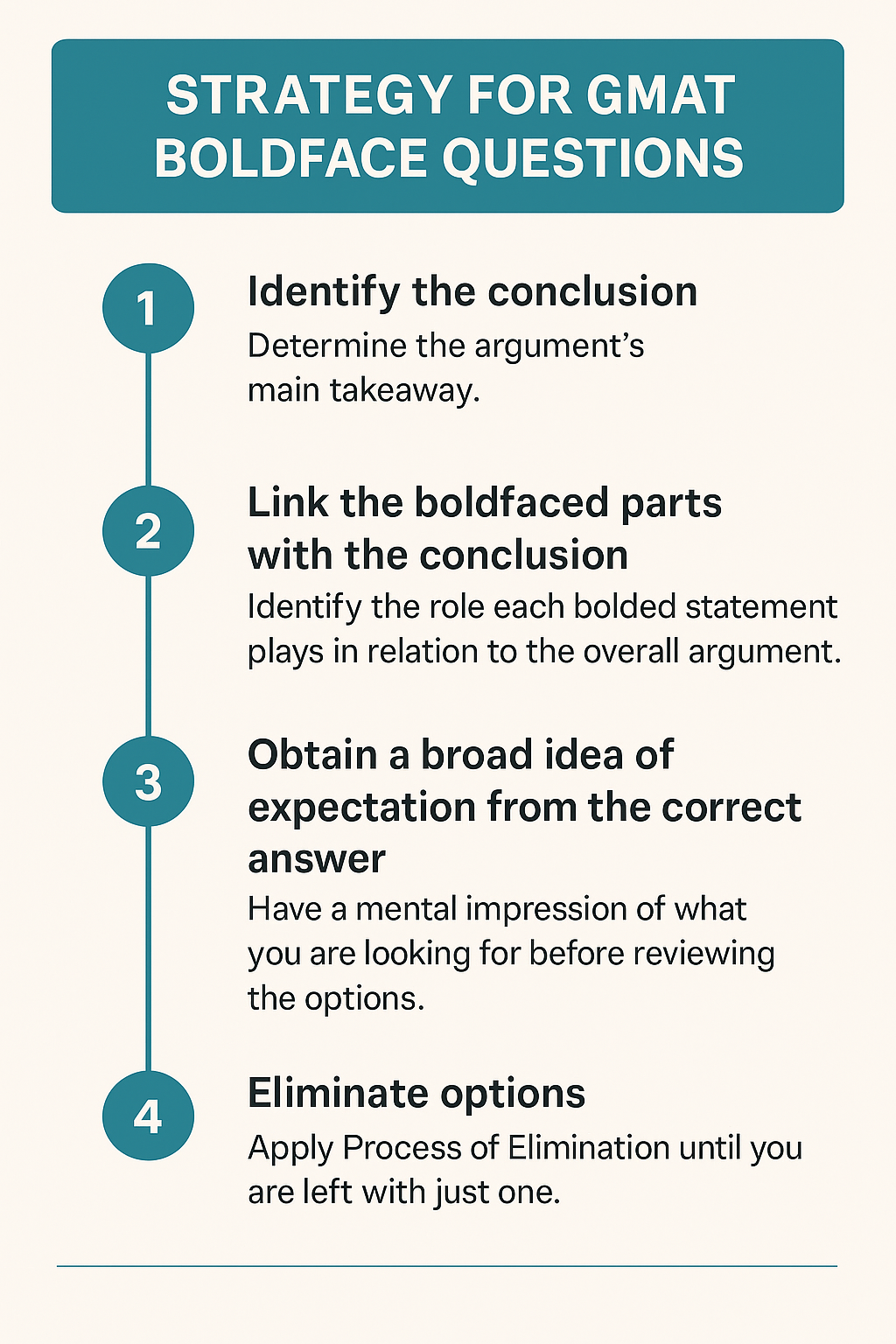Invest 30 seconds...
...for what may lead to a life altering association!
Help Line
- +91.8800.2828.00 (IND)
- 1030-1830 Hrs IST, Mon-Sat
- support@expertsglobal.com
...for what may lead to a life altering association!


Bold-face questions in GMAT Critical Reasoning test the roles of bold parts within an argument. Start by identifying the main conclusion, then link each bold portion to it. Set broad expectations before reviewing answer choices, and apply elimination to find the correct option.
Boldface questions reward structural reading. This overview outlines a disciplined approach: first locate the passage’s main conclusion, then consider how each boldfaced statement relates to the main conclusion. Prephrase the likely role pairing before viewing options to reduce language noise and confirm logic. The video illustrates the workflow; the article supplies role labels and examples. These habits strengthen analytical focus during GMAT prep and support argument mapping valued in MBA admissions across practice sessions.

Among all Critical Reasoning question types on the GMAT, boldface questions are probably the most interesting and require the highest precision. In these questions, parts of an argument are highlighted in bold, and the test-taker is asked: “In the argument, the boldfaced portions play which of the following roles?” The challenge lies in not just understanding the argument but also navigating the heavy vocabulary and complex phrasing of the answer choices.
GMAT boldface critical reasoning questions present an argument in which two specific statements are highlighted in bold. The question then asks you to identify the role that each boldfaced statement plays within the argument, such as whether it states evidence, a claim, a counterpoint, or the main conclusion.

Correct Answer: E

The strategy to handle these questions is clear and structured:

Students often get misled by answer choices that sound correct but do not match the logical structure of the argument. A frequent trap is an answer suggesting that a boldface opposes the conclusion when it merely provides context or evidence. Always check: does this boldface support, oppose, evaluate, or conclude? And how does it connect with the overall reasoning?
Boldface questions test your ability to classify parts of an argument by their role – evidence, context, intermediate conclusion, main conclusion etc. Success lies in identifying the central claim, linking each boldfaced statement to it, and predicting the logical relationship before reviewing answer choices. Eliminate options that misstate roles or exaggerate opposition, focusing only on accurate pairings. Practicing this structured method in GMAT simulations sharpens recognition, reduces confusion from dense wording, and builds confidence in handling complex Critical Reasoning problems.
Boldface questions remind us that life, like arguments, is made of parts that serve different roles—some provide context, others shape direction, and a few define the ultimate conclusion. In GMAT preparation, clarity emerges when you learn to see structure rather than get lost in detail. In MBA applications, the same principle applies—success depends on presenting facts, reasoning, and conclusions in harmony. In life, too, wisdom lies in recognizing how each element contributes to the whole. Each GMAT mock offers practice in building this clarity and balance.